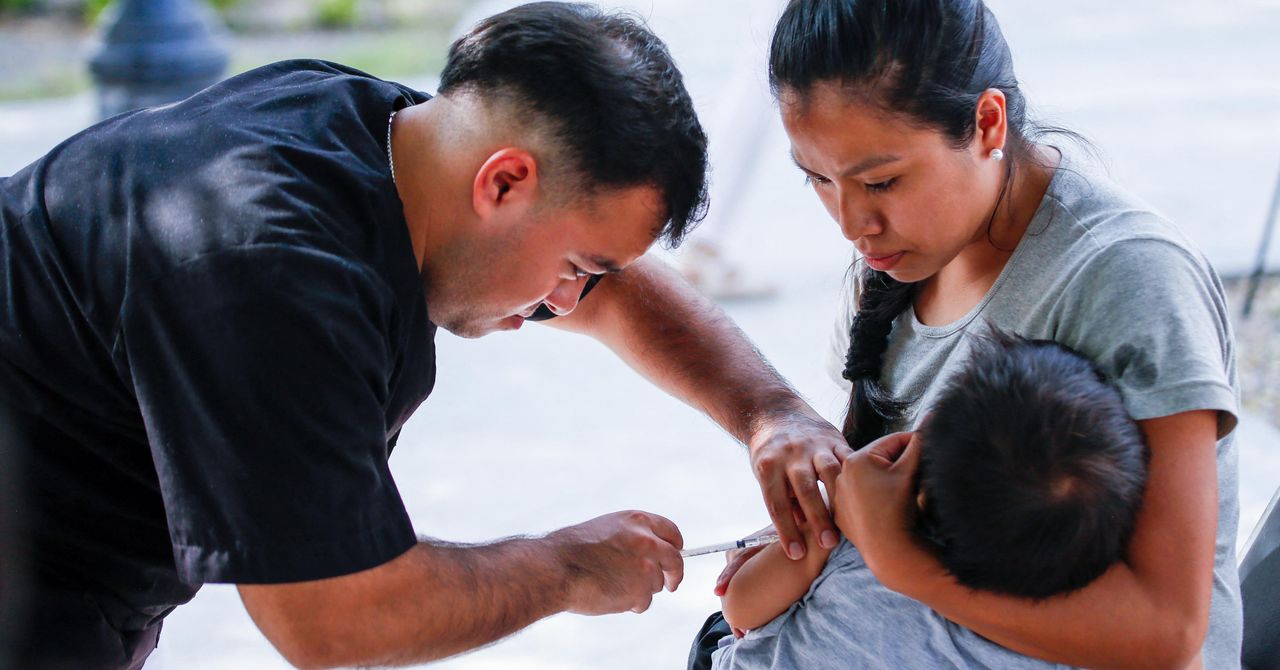The spread of measles is showing no signs of slowing down in Mexico. Between July 21 and 25, the country’s number of confirmed infections in 2025 rose from 3,553 to 3,730, an increase of 197 in only four days, according to the Ministry of Health. Experts and health officials in Mexico have warned that the virus’s speed of transmission appears to be increasing.
So far, the outbreak has claimed the lives of 12 people: 11 in the state of Chihuahua—which borders Texas to the north, the epicenter of the US’s measles outbreak—with one more death in the neighboring state of Sonora to the west. Mexican health authorities have called on all health care providers to reinforce surveillance and prevention measures to contain the spread of the virus.
Children between zero and four years of age continue to be the population most affected, with 838 infections—an incidence of 8.05 cases per 100,000 children. People aged between 25 and 29 also account for a large number of infections—512 cases—while there have been 419 cases among those between 30 and 34 years old.
The latest bulletin issued by Mexico’s National Epidemiological Surveillance System, SINAVE, points out that infections have been concentrated in Chihuahua. The border state has reported 3,490 cases, which represents 93 percent of the total for the country. So far, a total of 7,086 probable cases have been counted, in 82 municipalities across 20 states of the country.
In view of the seriousness of the outbreak, the government of Chihuahua has activated what it is calling the “Juarez Shield Strategy.” The initiative includes a massive free vaccination campaign for those between six months and 49 years of age. Over the last week, state health authorities have vaccinated around 42,000 people against measles.
The Ministry of Health has also launched its “Rapid Response Plan for the Interruption of the Measles Outbreak,” a multi-part initiative that aims, among other things, to strengthen epidemiological surveillance and laboratory diagnosis to speed up the identification and containment of cases. The plan also proposes establishing controls in clinics and out in the community to break the chain of transmission, which includes isolating probable and confirmed cases in health care settings.
Measles Resurgence Is a Global Problem
Measles is one of the world’s most contagious viral diseases. It spreads through contact with infected bodily fluids or by airborne transmission. According to the World Health Organization (WHO), the virus can remain active in the air or on surfaces for up to two hours. An infected person can infect up to nine out of 10 unvaccinated close contacts, according to the US Centers for Disease Control.
Anyone unvaccinated can contract the disease, although it is most common in children. Initial symptoms include high fever, cough, runny nose, and a rash that spreads over the body. The incubation period is 10 to 14 days, and the illness lasts between four and seven days.
Complications of measles affect a small minority of patients, but they can be deadly, and are the main cause of mortality following an infection. They can include blindness, encephalitis, severe diarrhea, dehydration, ear infections, and pneumonia. Complications are especially dangerous for children under five, adults over 30, and patients with malnutrition or weakened immune systems. In addition, according to the WHO, the virus weakens the immune system, leaving patients vulnerable to other infections.
There is no specific treatment for measles, so mass vaccination is the best prevention strategy. But following successful elimination strategies in many parts of the world, including the US, the virus has resurfaced in some of these places in recent years due to declining vaccination rates. In 2023, the WHO recorded 10.3 million cases globally, representing a year-on-year increase of 20 percent. Until recently, most infections were concentrated in Africa, Southeast Asia, Europe, the Eastern Mediterranean, and the Western Pacific. However, the disease has begun to gain ground in the Americas, with outbreaks raising alarm bells in the United States, Canada, and Argentina.
This story originally appeared on WIRED en Español and has been translated from Spanish.








